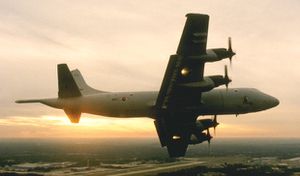April 14, 2014 defense-aerospace.com
(Source: Defense Security Cooperation Agency; issued April 11, 2014)
Germany – P-3C Aircraft Upgrades and Related Support
WASHINGTON --- The State Department has made a determination approving a possible Foreign Military Sale to Germany for P-3C aircraft upgrades and associated equipment, parts, training and logistical support for an estimated cost of $250 million. The Defense Security Cooperation Agency delivered the required certification notifying Congress of this possible sale on April 11, 2014.
The Government of Germany has requested a possible sale for the procurement, integration, and installation of hardware and software to upgrade the aircraft mission computer and acoustic systems, and non-integrated simulator equipment on 8 P-3C aircraft. The hardware and software include A (structural and electrical) and B (Weapon Replaceable Assemblies) kits for future integration into the simulator.
Also included are the design, development, integration, testing and installation of a ground-based mission support system (which includes the Portable Aircraft Support System and Fast Time Analyzer System); validation and acceptance; spare and repair parts; support equipment; personnel training and training equipment; publications and technical documentation; U.S. Government and contractor technical, engineering, and logistics support services; and other related elements of logistics support.
The estimated cost is $250 million
This proposed sale will contribute to the foreign policy and national security of the United States by improving the military capabilities of a NATO ally and enhancing standardization and interoperability with U.S. forces.
This proposed sale will update hardware and software to ensure the P-3 aircraft maintain operational capability. The upgrades will enhance Germany’s ability to participate in future coalition operations and will promote continued interoperability. Germany will have no difficulty absorbing this upgraded equipment into its armed forces.
The proposed sale of this equipment and support will not alter the basic military balance in the region.
The principal contractors will be Lockheed Martin Mission Systems and Training in Owego, New York; General Dynamics in Bloomington, Minnesota; Lockheed Martin Aeronautics Company in Marietta, Georgia; and Lockheed Martin Mission Systems and Training in Manassas, Virginia. There are no known offset agreements proposed in connection with this potential sale.
Implementation of this sale will not require the assignment of any additional U.S. government or contractor representatives to Germany.
There will be no adverse impact on U.S. defense readiness as a result of this proposed sale.
This notice of a potential sale is required by law and does not mean the sale has been concluded.
















